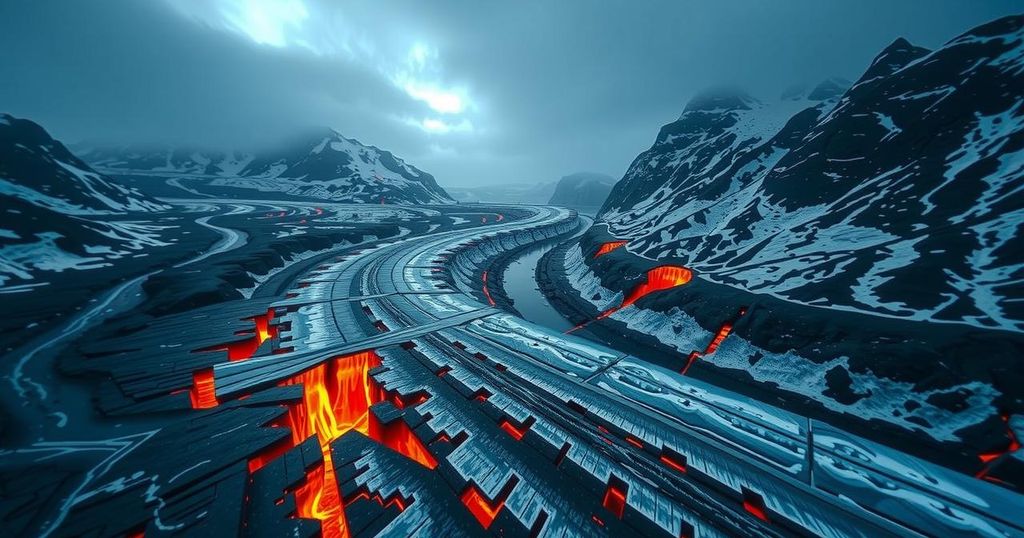Could Melting Glaciers Trigger Volcanic Eruptions?

Scientists are investigating whether the rapid melting of glaciers can trigger volcanic eruptions, particularly in regions like Iceland, where many volcanoes are covered by ice. The relief of pressure on the Earth’s crust due to melting ice could lead to increased magma formation, enhancing eruption risks. This could have significant implications for global sea levels and climate change effects.
Recent research has illuminated a concerning possibility: the rapid melting of glaciers could potentially trigger increased volcanic activity, specifically in regions where volcanoes are presently concealed beneath ice. A collaborative study involving twelve academic institutions, including the University of Iceland, seeks to explore this connection as scientists express concern that the necessary elements for a surge in volcanic eruptions are aligning due to climate change. Notably, more than half of Iceland’s volcanoes are ice-covered, which may lead to significant consequences not only locally but also globally, since volcanic eruptions release substantial amounts of carbon dioxide. The underlying hypothesis posits that glaciers and ice sheets exert significant downward pressure on the Earth’s crust and mantle, which helps to suppress the upward movement of magma from below. As temperatures rise and ice cover diminishes, this pressure alleviates, enabling increased melting of mantle rock, thereby generating more magma. This shift in pressure can catalyze tectonic forces beneath volcanoes, promoting more pronounced magma production and altering its trajectory, which may intensify volcanic eruptions. Research conducted by U.S. volcanologists has identified several high-risk volcanoes located beneath glacial cover around the world, with particular emphasis on those in the Andes of South America. Acknowledgment of the severity of the situation is underscored by British volcanologist John Smellie, who notes the existence of at least two to three active volcanoes in Antarctica, with estimates suggesting that as many as 100 to 150 volcanoes could be present beneath the ice. Satellite observations indicate that Antarctica is currently losing over 150 billion metric tons of ice annually. Should climate changes initiate a resurgence in volcanic activity in the upcoming decades, it could significantly accelerate the melting of the Antarctic ice sheet, further contributing to rising sea levels and threatening coastal cities globally.
The interrelationship between climate change and volcanic eruptions is an evolving field of study. The hypothesis presented in this research is based on the principle that the weight of ice plays a crucial role in regulating subterranean volcanic activity. As glaciers melt in response to rising global temperatures, their decreasing mass may result in an increase in volcanic activity. Understanding the dynamics of this interaction is essential, particularly given the potential environmental impact and hazards associated with volcanic eruptions. The presence of substantial ice coverage above volcanoes, especially in locales like Iceland and Antarctica, raises concerns over future geological stability and climate outcomes.
In conclusion, the research into the potential connection between melting glaciers and volcanic eruptions illustrates a troubling facet of climate change. The removal of ice pressure may lead to increased magma formation and altered eruption patterns, amplifying the risks associated with volcanic activity. This phenomenon not only poses a direct threat to nearby populations but also has global implications due to climate feedback mechanisms that could further exacerbate rising sea levels. The scientific community must continue to investigate these relationships to better understand and mitigate the risks involved.
Original Source: www.asiafinancial.com






